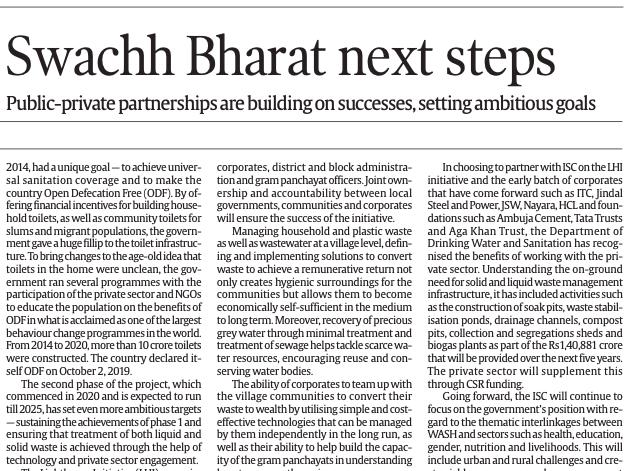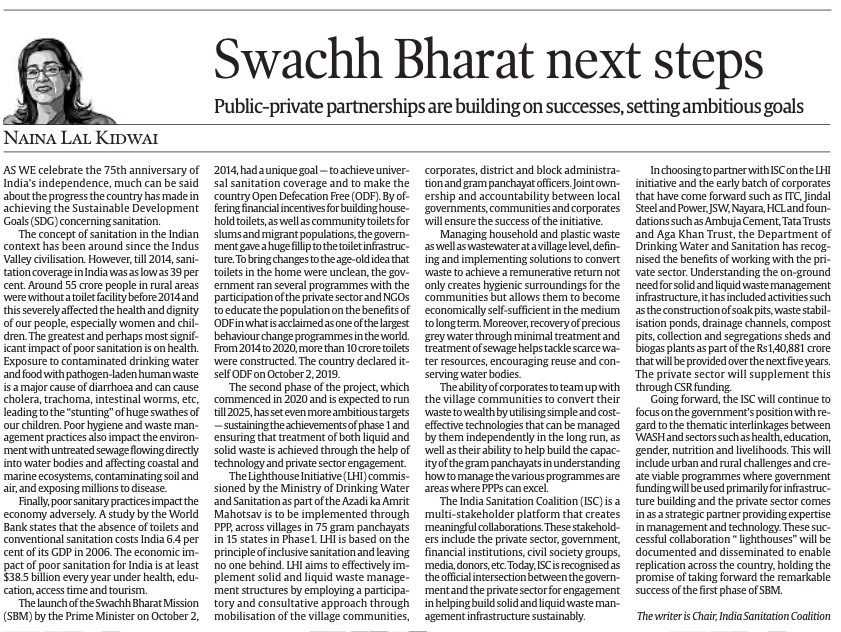Swachh Bharat next steps

AS WE celebrate the 75th anniversary of India’s independence, much can be said about the progress the country has made in achieving the Sustainable Development Goals (SDG) concerning sanitation.
The concept of sanitation in the Indian context has been around since the Indus Valley civilisation. However, till 2014, sani- tation coverage in India was as low as 39 per cent. Around 55 crore people in rural areas were without a toilet facility before 2014 and this severely affected the health and dignity of our people, especially women and chil- dren. The greatest and perhaps most signif- icant impact of poor sanitation is on health. Exposure to contaminated drinking water and food with pathogen-laden human waste is a major cause of diarrhoea and can cause cholera, trachoma, intestinal worms, etc, leading to the “stunting” of huge swathes of our children. Poor hygiene and waste man- agement practices also impact the environ- ment with untreated sewage flowing directly into water bodies and affecting coastal and marine ecosystems, contaminating soil and air, and exposing millions to disease.
Finally, poor sanitary practices impact the economy adversely. A study by the World Bank states that the absence of toilets and conventional sanitation costs India 6.4 per cent of its GDP in 2006. The economic im- pact of poor sanitation for India is at least $38.5 billion every year under health, edu- cation, access time and tourism.

